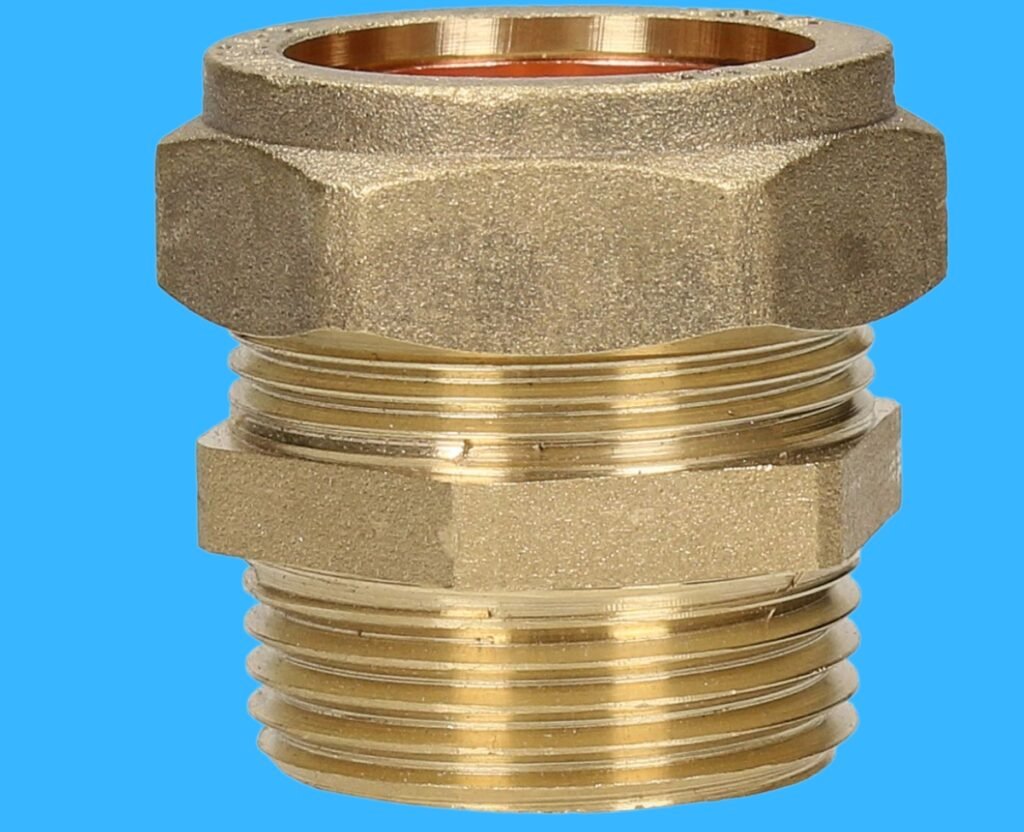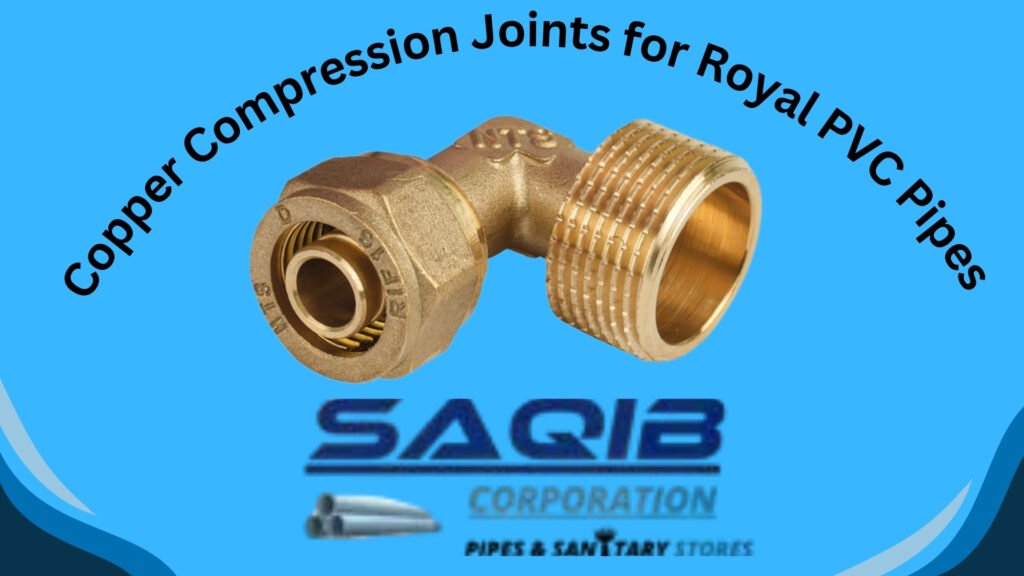Copper compression joints are a reliable way to connect pipes. These fittings are popular because of their simplicity, effectiveness, and durability. If you are working with Royal PVC pipes, understanding how copper compression joints work and why they are an excellent choice is crucial.
Copper compression joints are versatile. They create strong, leak-proof pipe connections without needing soldering or adhesives. This makes them incredibly easy to install and maintain. Their ability to connect different piping materials also makes them unique.
Royal PVC pipes are known for their lightweight property, excellent strength, and corrosion resistance. Pairing them with copper compression fittings can optimize your plumbing or piping system. To use these joints effectively, it is important to understand their components and installation process.
Key Components and Functionality
Every copper compression joint has three key parts. This nut applies pressure when tightened. The second component is the compression ring or ferrule. Tightening the nut crushes the ring, creating a tight seal. The last part is the joint body, which holds everything together.
When the nut is tightened, it compresses the ferrule snugly against the pipe and joint body. This seals the connection and prevents leaks. The lack of heat or glue during installation makes it an ideal solution for those seeking simplicity. Along with being durable, they also resist corrosion, making them suitable for long-term applications.

Pairing Copper Joints with Royal PVC Pipes
These pipes are made of high-quality polyvinyl chloride material, offering excellent durability and affordability. Unlike metal pipes, they don’t corrode. Their surface is smooth, reducing the risk of clogging over time. However, without the right connectors, these advantages can go to waste.
They are particularly useful for connecting Royal PVC to copper or other metal pipes. This cross-material compatibility is one of their key selling points. Piping systems often need to transition between different materials. For example, older systems may use copper, while newer installations may prioritize PVC for cost savings. A copper compression joint smoothly facilitates such transitions.
Installation Process
Installing a copper compression joint is not complicated. The process demands a few basic tools and careful execution. First, ensure the ends of the pipes are smooth and free of debris or irregularities. Next, slide the compression nut and ring onto the PVC pipe. After ensuring alignment, use a wrench to tighten the nut further. These steps guarantee a flawless installation when followed carefully. This method also eliminates the need for professional help, appealing to DIY enthusiasts.
Benefits of Using Copper Compression Joints
Copper compression joints are a highly beneficial addition to PVC piping systems. Their adaptability, durability, and performance make them a favorite in various applications. Below are the core benefits they offer:
Easy Installation
Installing these joints does not require skilled labor.
Leak-Proof Design
The sealing mechanism ensures a secure connection, preventing leakage. Even under high pressure, the system remains intact.
Material Compatibility
These fittings connect pipes of different materials, like PVC and copper, without compatibility issues.
Cost-Efficiency
Long-lasting performance makes them a cost-effective choice. They require minimal maintenance over time.
Environmental Benefits
Copper and PVC are recyclable materials. This makes the fittings eco-friendly.
Each of these benefits highlights the value of these fittings in providing practical, long-term solutions.
Drawbacks to Observe
While copper compression joints have numerous advantages, it is wise to be aware of their potential downsides. Their outright cost is higher compared to simple PVC connectors. However, their durability outweighs this minor disadvantage. Additionally, improper installation can result in leaks. Individuals unfamiliar with the process may need guidance. Despite these minor issues, the advantages of using copper connectors far surpass their drawbacks.
Maintaining Copper Compression Joints
Proper maintenance extends the life of these fittings. Begin by checking for leaks periodically. Even a minor drip can escalate into a larger issue if left unresolved. Tighten connections slightly if leaks are noticed. Besides this, cleaning the fittings keeps their surface in good condition.
If a copper joint gets damaged, replace it immediately. Damaged components cannot maintain a seal and can compromise the entire pipeline. Compared to other fittings, these have fewer maintenance needs, making them user-friendly over the years.
Why Choose Copper Compression Joints for Royal PVC?
Plumbers and contractors choose copper compression fittings for their reliability. They provide a long-term solution for creating adaptable and durable systems. Pairing these joints with Royal PVC pipes offers unparalleled advantages over alternatives. By using copper compression joints, users can focus on optimizing their time and resources. It ensures compatibility and stability, whether in residential properties or commercial settings.
Conclusion
Copper compression joints act as problem-solvers for modern piping systems. They minimize installation challenges while maximizing performance. Royal PVC pipes, known for being dependable and efficient, pair perfectly with these fittings. Together, they form an unbeatable combination that homeowners, contractors, and businesses can rely on.
This partnership between materials showcases a balance of modern innovation and traditional reliability. Copper fittings simplify connections. Royal PVC enhances durability and efficiency. Both come together to deliver a trustworthy system that meets all piping needs. Investing in these fittings offers peace of mind and ensures seamless connections for years to come.

